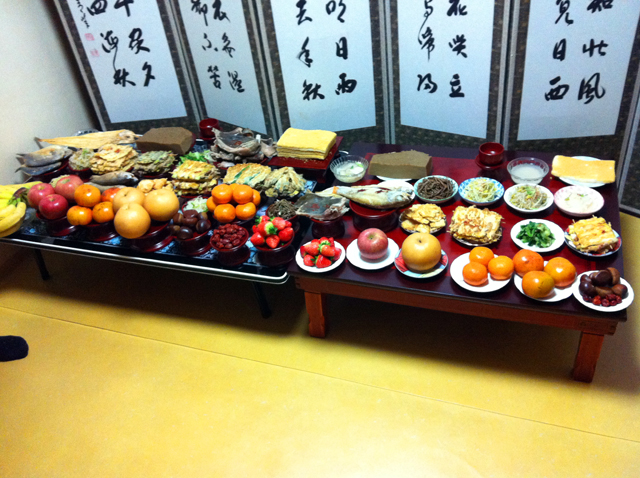Image of the Week: Traditional Family Lunar New Year Celebration
This week marks the start of the new year in lunar-based calendars, and the New Year's Day is the largest holiday of the year in Korean and East Asian cultures. The New Year's Day celebrations can be quite elaborate depending on a family's fealty to cultural traditions, but the exact practices vary between families depending on religious practices, cultural background, number of family members, and the hometown of the family. This is the year of the Dragon, and that has meant that the animal has become quite prevalent throughout the country in the past few weeks.
At the heart of the holiday is a certain introspection regarding one's age and ancestors. Since the Korean age system is based around New Year's day (one's age increases for everyone in the country simultaneously on New Year's day, as opposed to on birthdays) Acknowledging and honoring one's ancestors is at the heart of the event, and many Koreans will trek back to their ancestral hometowns to visit grave sites of previous generations of their family. At the same time, it is a time to commemorate another year of life and the continuing passage of time.
I participated in the traditions with a friend of mine here in Korea. The celebration began in the early morning with the cooking of a banquet feast, including (Tteokguk), which is the traditional food eaten only during New Year's.

In the same room as the food are pictures of the family's ancestors on the wall. Before the food is eaten, the men in the family (sons and fathers) performed a series of traditional bows to honor the ancestors before enjoying the breakfast. Due to the small dining room, this particular family had men eat first, before leaving and allowing the women to eat as a group.
One large component of these festivities are gifts of money from grandparents and family relatives to the kids. These came in envelopes from each of the families and were distributed to much excited yelling and screaming.
Later in the day, I travelled with the family out of Seoul into the surrounding countryside to visit the burial place of some more ancestors on the other side of the family. Traditionally, wives visit their husband's family in the morning, before visiting their own families in the afternoon (this transition is variable between families of course). The grave site of the great-grandfather can be seen in the burial mound on this hill. Behind it is another generation of grave sites, and they progress down the hill in linear fashion from oldest to youngest.

What was most impressive was the incredible view that these burial mounds overlooked. Unfortunately, the iPhone camera doesn't really do the scene justice, but the view is spectacular in person.
